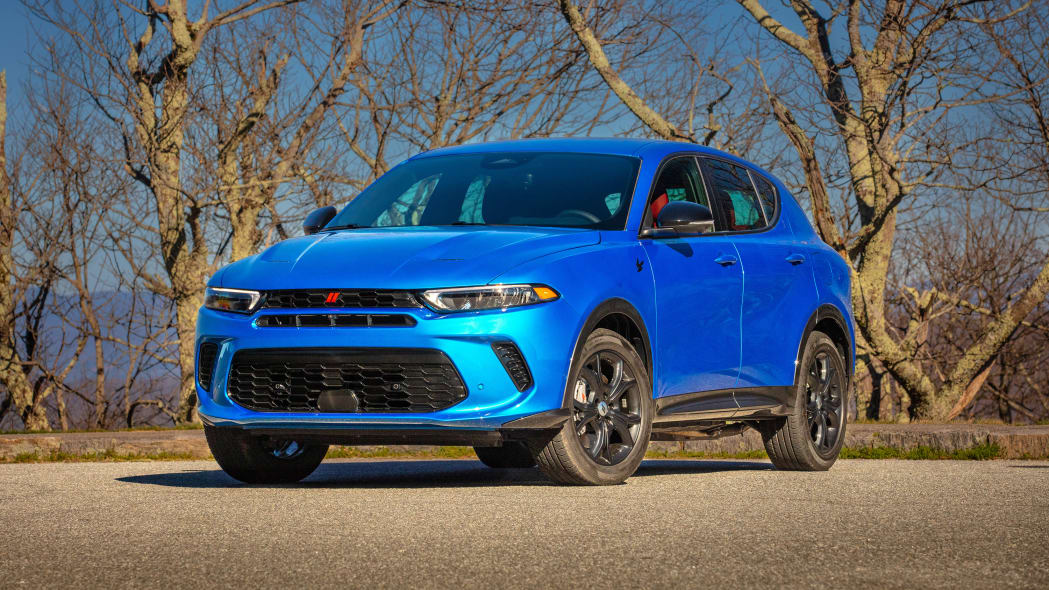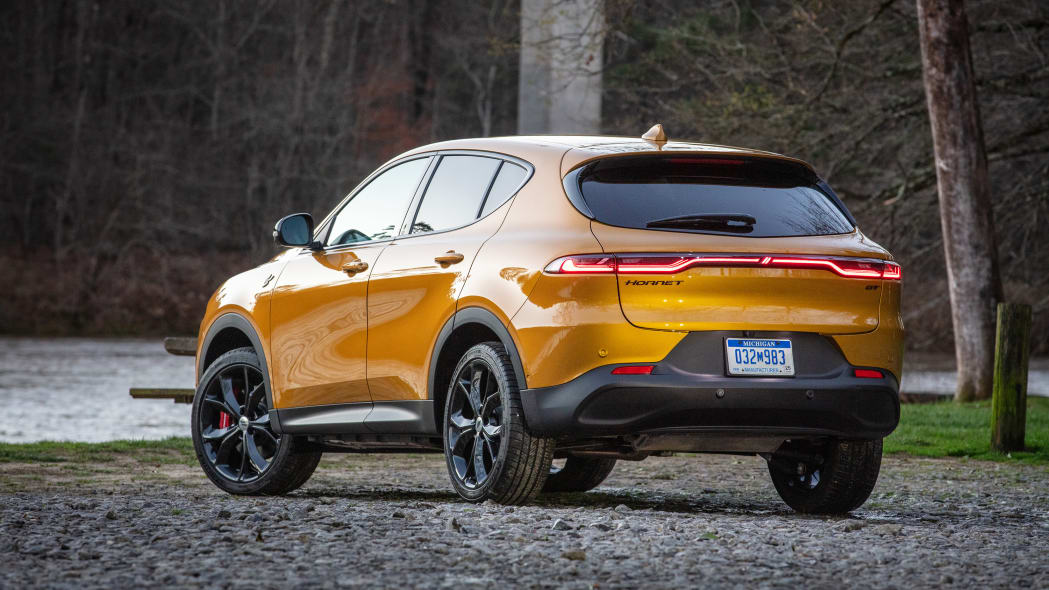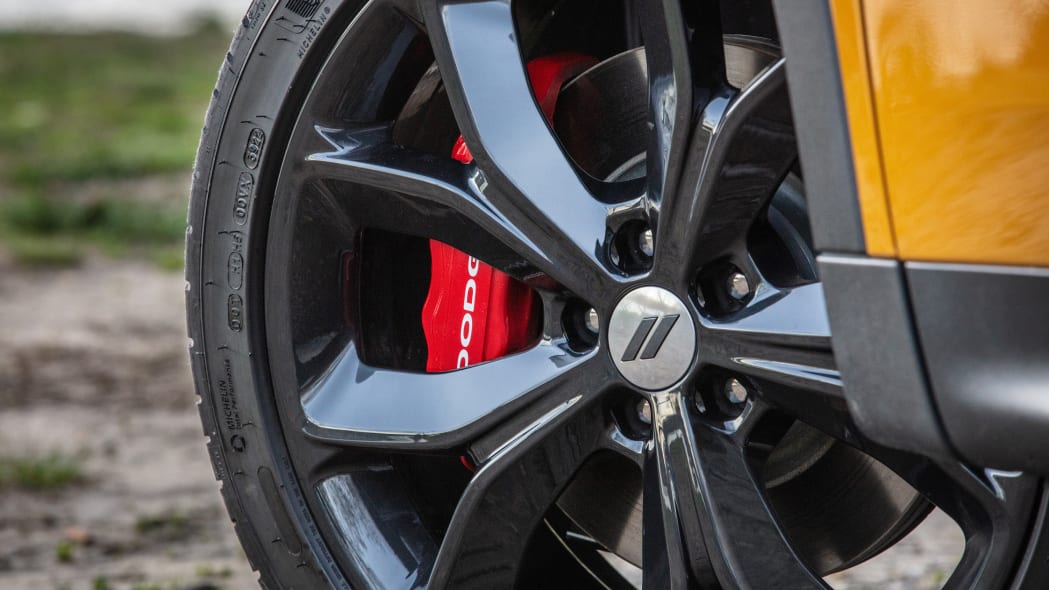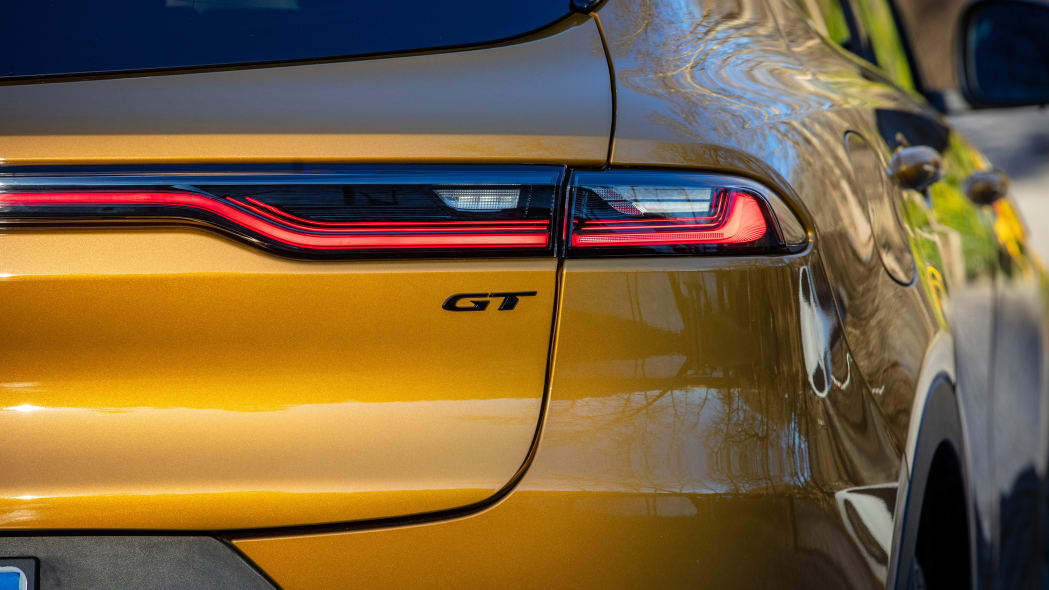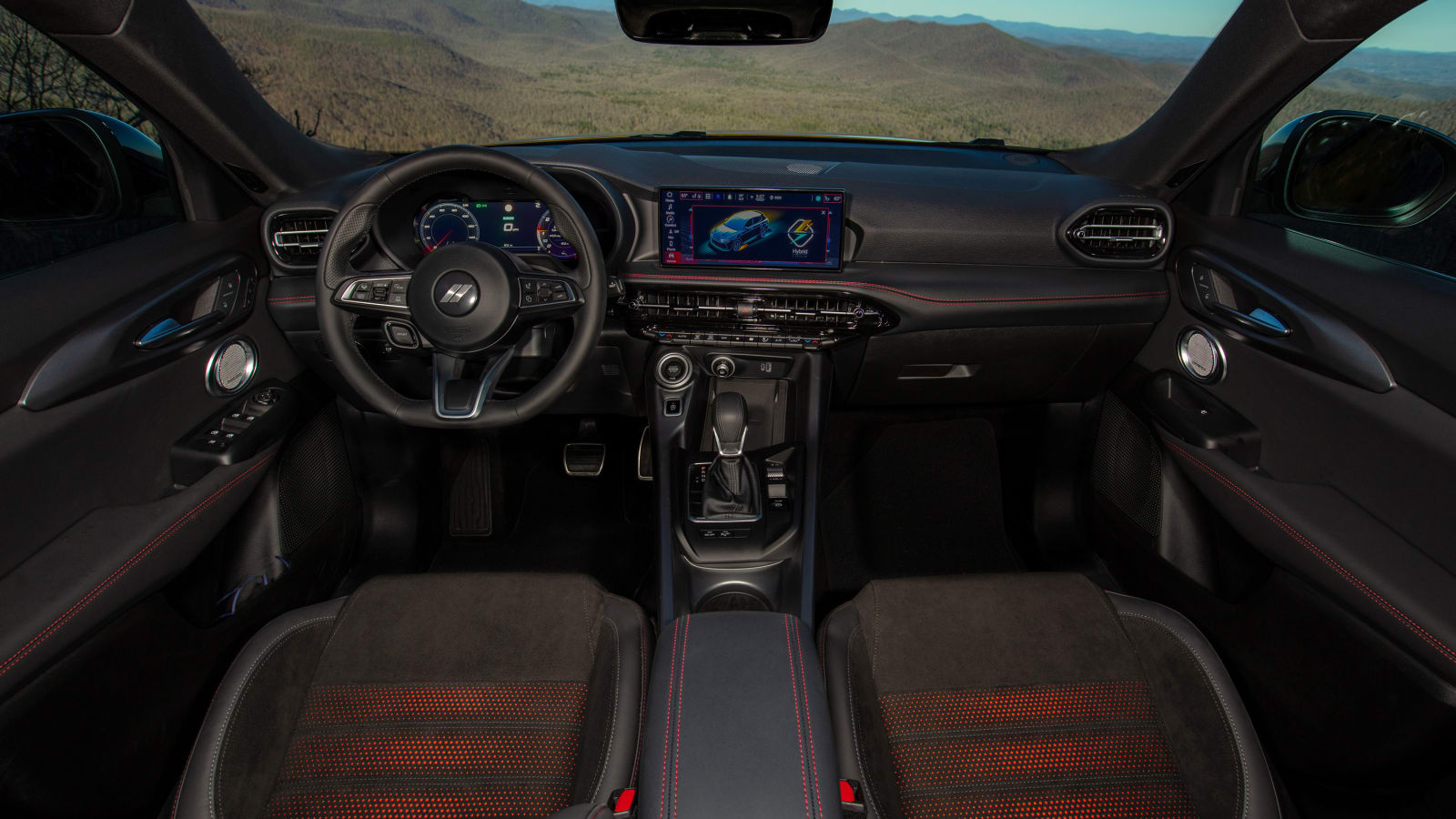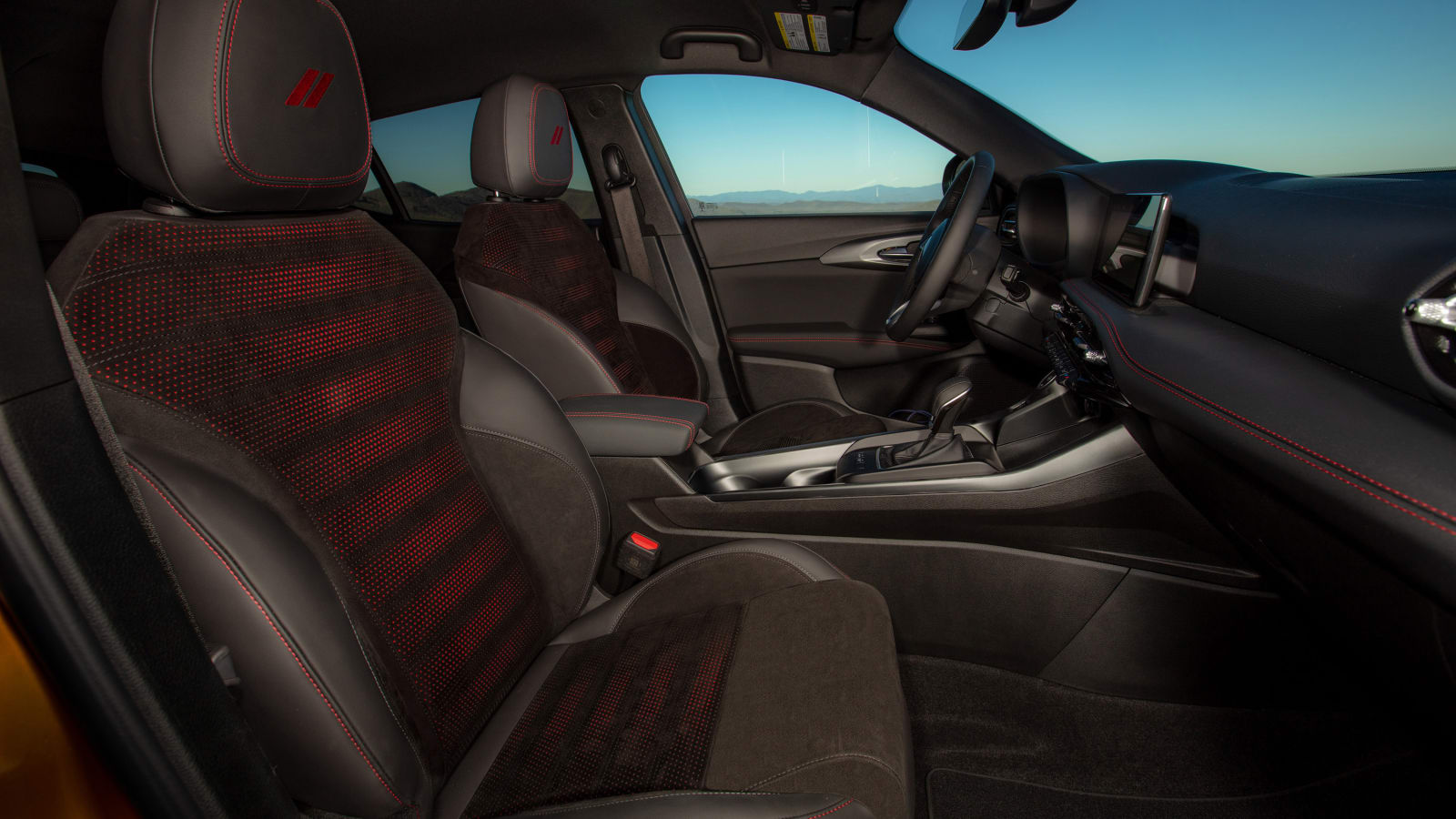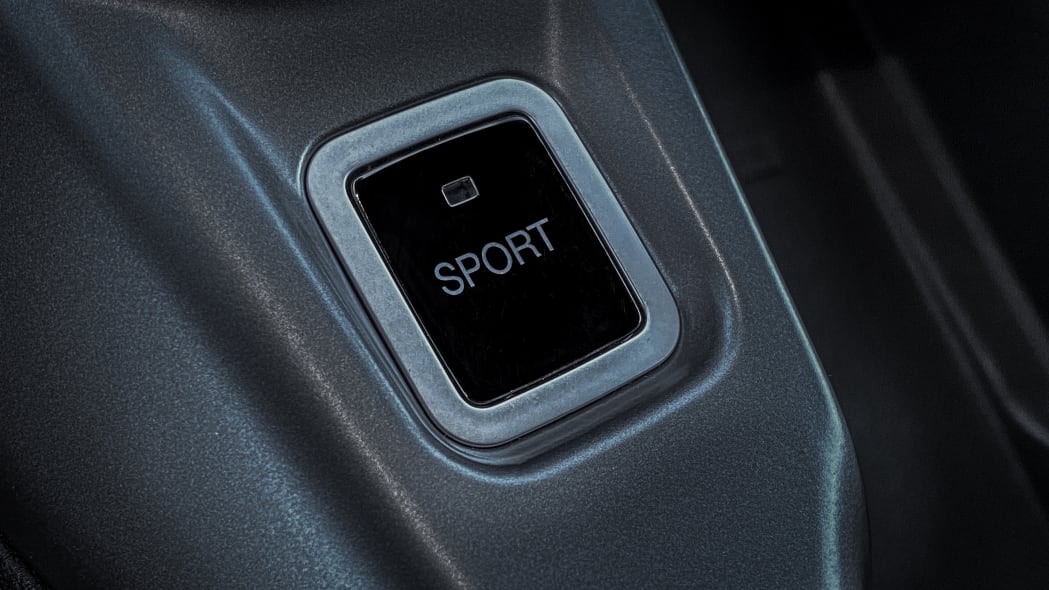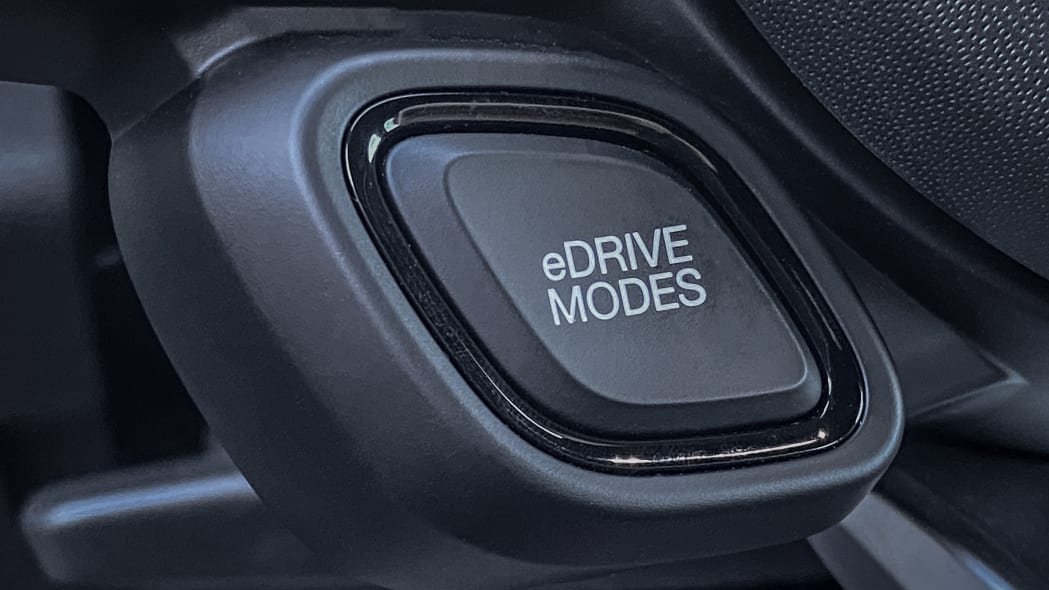ASHEVILLE, N.C. — This is a year of transition for Dodge. As the Charger and Challenger burn rubber into the sunset, dealers are making space on showroom floors for the brand’s first all-new model in a decade. Filling the void left by those low-slung, muscular brutes is the 2023 Dodge Hornet. This lean, mean, all-wheel drive crossover has big tire marks to fill. Can a punchy little runabout based not on a grain-fed German luxury sedan, but a lithe, Mediterranean compact with an Alfa Romeo badge satisfy the cravings of America’s Brotherhood of Muscle? We set off for the hills of western North Carolina to find out.
Dodge calls the Hornet its first compact crossover SUV. That alone is worth parsing. At face value, it checks out: The Journey was closer to a midsize crossover, while all of the brand’s older SUVs were either bigger or the Nitro, a sort of missing link between traditional body-on-frame SUVs and crossovers. But while we’re on the subject of forgettable ChryCo products of the 2000s, there was also the Dodge Caliber. Sure, it was a hatchback and a rightfully derided one. But how different conceptually was it from today’s sea of subcompact “crossovers” (or even contemporary vehicles like the Toyota Matrix/Pontiac Vibe twins for that matter)? It offered features that truly crossed over from the old-school SUV segment, including all-wheel drive — something you can’t even get on some modern “crossovers” — and maybe our memories are a bit fuzzy, but we’re pretty sure Dodge was keen on accentuating the Caliber’s cute ‘ute attributes, too.
Anyway, it might be a stretch to say that the Hornet is Dodge’s first small crossover, but whatever you want to call it, it came out swinging. The standard Hornet packs 268 horsepower and 295 pound-feet of torque, which is the most you’ll get out of any standard compact SUV engine by a country mile. AWD with brake-based torque vectoring is also standard, along with a nine-speed automatic transmission. If this is all starting to sound familiar to you, that’s because it’s almost identical to what you get in its luxury platform-mate, the Alfa Romeo Tonale.
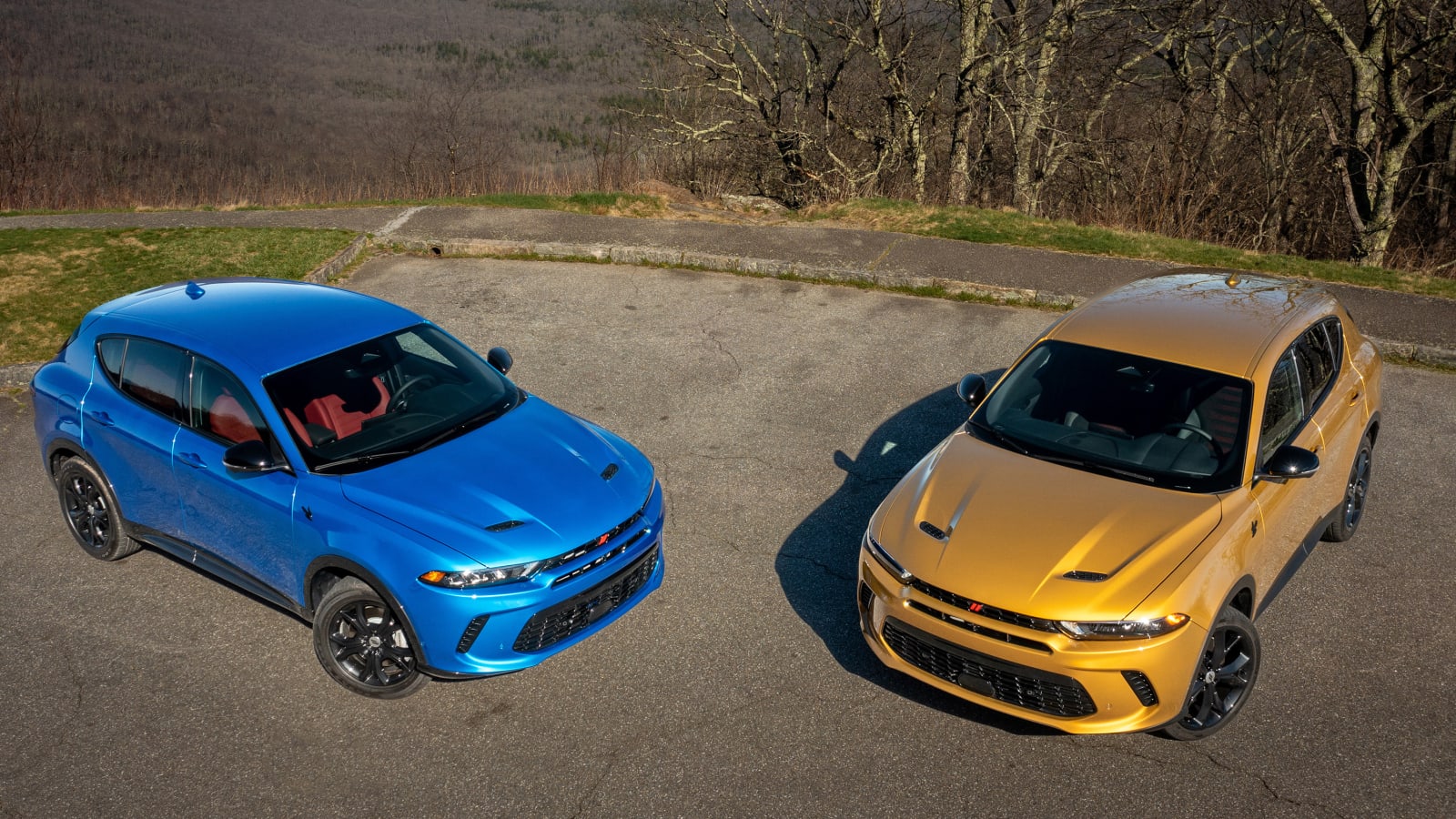
Upgrade to the plug-in hybrid R/T model and the 2.0-liter gets tossed in favor of a 1.3-liter gas-burning inline-four and two electric aids: a 44-horsepower belt starter generator mated to the six-speed transmission up front and a 121-horsepower motor powering the rear axle. The real headline here is the system’s combined torque output: 383 lb-ft. Its 288 total system horsepower is made underwhelming because the R/T relies on a gimmick to hit that number.
Dodge calls it “PowerShot,” and to use it, you’ll need juice in the Hornet R/T’s battery. The amount of boost you get will be directly proportional to its state of charge. At peak output, it delivers 30 horsepower and helps the Hornet hit its advertised 5.6-second 0-60 time, which is 1.5 seconds quicker than the best result you can expect from just flooring it in “Normal” mode (or 0.9 quicker than the GT). To be clear, that’s not 30 more horsepower on top of its rated 288; that figure is already baked in.
Worse, you have to jump through hoops to use it. First put the Hornet into “Sport” mode via the dash button, then pull back on both wheel-mounted paddle shifters simultaneously to engage the system. The car will perform a quick check and display an icon in the cluster. At that point, you floor it all the way to the kick-down detent and let the computer sort out the rest. You can do this from a stop or a roll. So long as you have battery to sacrifice, the Hornet will gladly perform the ritual. Having tried it twice (once for a juiced up “hole shot” and once from a highway roll), it’s frankly underwhelming. Lopping 1.5 seconds off the 0-60 time may be a huge advantage, but the math doesn’t translate 1:1 to excitement.
When you strip away the PowerShot silliness, what you’re left with is a “performance” PHEV that weighs 400 pounds more (at more than 4,100) and offers 10 horsepower less than the ICE model it’s based on. And you’ll note that to this point, we’ve yet to turn a single corner. So, let’s do that.
We had opportunities to try out both the standard GT and the PHEV-based R/T on squiggly little bits of asphalt criss-crossing the Blue Ridge Parkway. The route took us from the center of town in Asheville south into the pine woods lining the French Broad River. The speed limit for much of the route was a pleasant 55. At a cruise, the Hornet is admirably quiet and plenty comfortable — dare I say European?
Our first outing was in the 2.0T-powered GT, which eats uphill onramps for breakfast. It shrugs off elevation with aplomb and never feels outmatched even by the 3,700-pound Hornet. Engaging Sport mode in the GT will tell the computer to wait longer to upshift and command more throttle and the torquey little four-pot dutifully serves up oomph with even a hint of right foot. It’s a bit punchy this way for basic cruising, but it’s not as intolerable as some sport tunes. Leave it in “normal” and it fades dutifully into the background. Good engine.
And what of the suspension? The Hornet comes standard with Koni Frequency Selective Damping (FSD) shocks. They employ a parallel dual-valve system that can amplify hydraulic forces within the damper piston without the need for complex (read: expensive) electronic hardware, meaning they can automatically increase or decrease damping based on the flow of hydraulic fluid alone.
They’re crisp and responsive to driver inputs but smart enough to round off the rougher edges of pothole and expansion-joint impacts. We can attest to their ability to moderate jarring impacts, but turning a 3,700-pound compact crossover into a corner-carver is no small task. Even the best compact crossovers can’t satisfy quite like a well-executed sedan or hatchback, just ask Mazda. The FSDs are a respectable compromise for those who know deep in their hearts that they’d never bother fiddling with electronic damper settings.
Now, if you really are up for some fiddling, there’s the Track Pack, which adds for-real adjustable dampers that adapt to the Hornet’s drive modes. It’s not a must-have for its sheer edge in handling so much as an ideal upgrade for those whose weekend dreams bookend a potholed commuting nightmare. Realistically, if you’re expecting sport sedan levels of response from a utility vehicle this heavy, you’ll want something with a stronger dynamic backbone, which will push you toward the enthusiast end of the compact luxury segment. Think Alfa Romeo Stelvio (as opposed to Tonale) or Porsche Macan.
But for what it is, the Hornet GT is reasonably composed and responds competently to assertive inputs. The R/T feels notably heavier everywhere and for little appreciable gain in performance. Let’s face it; unless you’re lined up against some punk in a Tucson PHEV with something to prove, the charge you’d burn using PowerShot would be better used in place of gasoline on your pregame supply run. Out on a winding road, the R/T is just more car in all the ways you don’t want.
The Hornet’s steering effort adjusts with its drive mode (Track pack or not), but its ratio remains constant and the feedback is fairly muted. It’s pretty quick, requiring a steady hand on the highway, lest the Hornet’s nose drift too far off your intended line — provided, of course, that you don’t leave that sort of thing to the Hornet’s computers. We gave that a shot on the highway and found the lane-centering steering assist feature adequate, but a bit prone to hunting for the white line, which comes through as constant minor steering wiggles. Others do it better.
A chance at electronic redemption would come later, though, as our miniature caravan ended up a dozen cars or so behind slow-moving farm equipment on a two-lane with limited passing opportunities. With the cruise control set to the speed limit, the Hornet followed a rusted out hulk of a dump truck for several miles, matching its speed (to a dead stop at times), keeping to the lane markings and just generally doing a great job of handling the misery while I rested my foot. These systems have their place; just don’t make it everywhere.
Despite the Hornet’s Italian DNA, its infotainment is bog-standard Uconnect 5. Like in the Chrysler Pacifica PHEV and Jeep’s 4xe models, , the Hornet R/T gets extra pages to monitor energy flow and set charging options. Feature-wise, everything appears to be intact, but the software version deployed in our testers appeared to be at least a half-step from final, as the navigation system in particular was uncharacteristically sluggish.
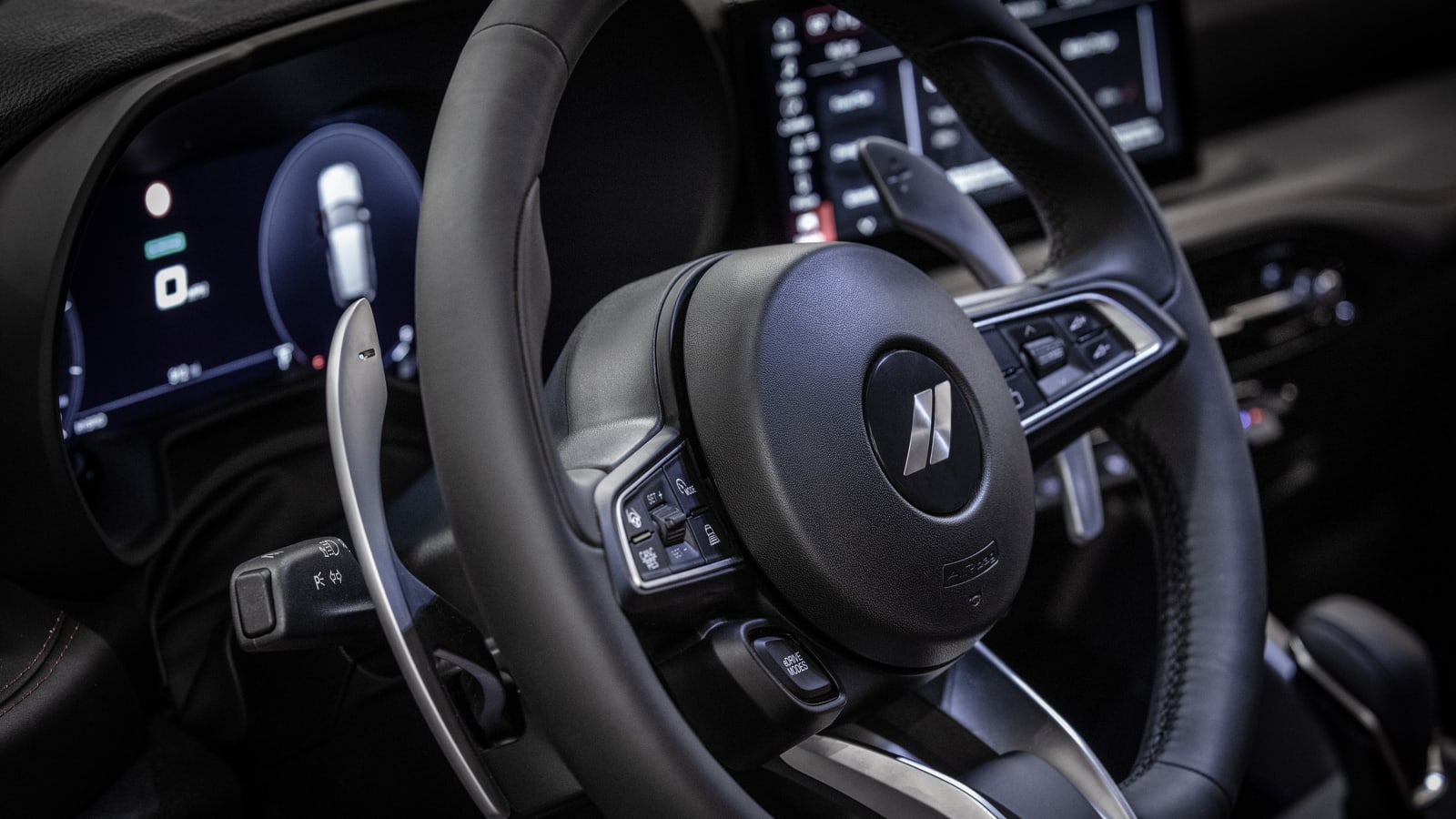
Fortunately, your interaction with Uconnect will be limited to the features that work best on a screen. The rest are controlled by buttons, knobs and switches. Check the gallery if you don’t believe me. In a world seemingly bent on reducing and digitizing in-cabin controls to the point of torpedoing their functionality, the Hornet offers a refreshingly analog cabin. In this case, most of the credit goes to the team behind the Tonale’s interior. While Dodge put the finishing touches on the Hornet’s dashboard and specified some unique switchgear here and there, the fundamentals here are all Alfa.
Unfortunately, the Hornet also inherits the Alfa’s rather parsimonious cargo area. At just 27 cubic feet with the seats up, it’s much smaller than even the sleek Mazda CX-50’s. The R/T’s battery pack eats into the rear cargo area even more, dropping the total volume to just under 23 cubic feet. These figures aren’t downright embarrassing, but they certainly lean more toward midcompact, a la Honda HR-V.
With the imminent demise of Challenger and Charger, Hornet will be Dodge’s cheapest vehicle of any kind, starting at $31,590. Dodge will join Jeep at the inexpensive end of the price curve, but due likely in part to Jeep’s more-premium brand identity, the Dodge gives you more performance for your money. For an identical (to the dollar) starting price, the 2023 Jeep Compass rides on the same platform as the Hornet and gives you just about the same specs top-to-bottom, with one exception: It comes with a down-rated, 200-hp version of the same 2.0-liter engine found in the Hornet GT, with no option to upgrade.
Dodge says the Hornet’s potent base powertrain is meant to reflect the company’s performance-first attitude, which works just fine for marketing purposes, but leaves us scratching our heads even further as to the point and positioning of the Compass, at least at MSRP. A customer browsing inventory at their local Chrysler/Dodge/Jeep/Ram/American flag dealer will likely see one of them with a big (or perhaps bigger) pile of cash on its hood, and we’re betting it’ll be the Compass, not the Calabrone del Napoli. Both are on the pricy side for base-model compact CUVs (even the CR-V LX costs less), but if it’s horsepower-per-dollar you care about, the Hornet absolutely crushes the Mazda CX-5 Turbo, which now starts at $38,125.
And that’s just the base model. Above that, you have the plug-in R/T. Technically a 2024 model, it’s precisely $10,000 more expensive than the GT. At that price, the Hornet R/T competes directly with the RAV4 Prime (302 hp, 42 miles of EV range) and Tucson/Sportage PHEVs (261 hp, 33 miles). The Toyota is just as punchy as the Dodge but a bit noisy and coarse, while the fraternal twins are quite pleasant to tool around in but lack any sporting pretensions. None of those are marketed as sporty per se, though. If you ask me, the Hornet R/T shouldn’t be either, but here we are.
Gone are the days of Omnis and Neons and Calibers and Darts. If Hornet is the new normal, it’s one we can live with. Dodge offers more bang for the enthusiast’s buck than anything else in the segment and its high-output engine is certainly welcome in this ocean of economical sameness. It’ll give Mazda fits at a price point thousands below either the CX-5 or CX-50 turbo and, knowing Dodge, the Hornet will likely benefit from a near-constant rotation of special interior and exterior treatments. The spiciest Mazda gets is some fancy dash stitching. Plus, Mazdaspeed is dead, while Dodge is preparing the Hornet to Go Like Hell. This story is just beginning.
Related video:

